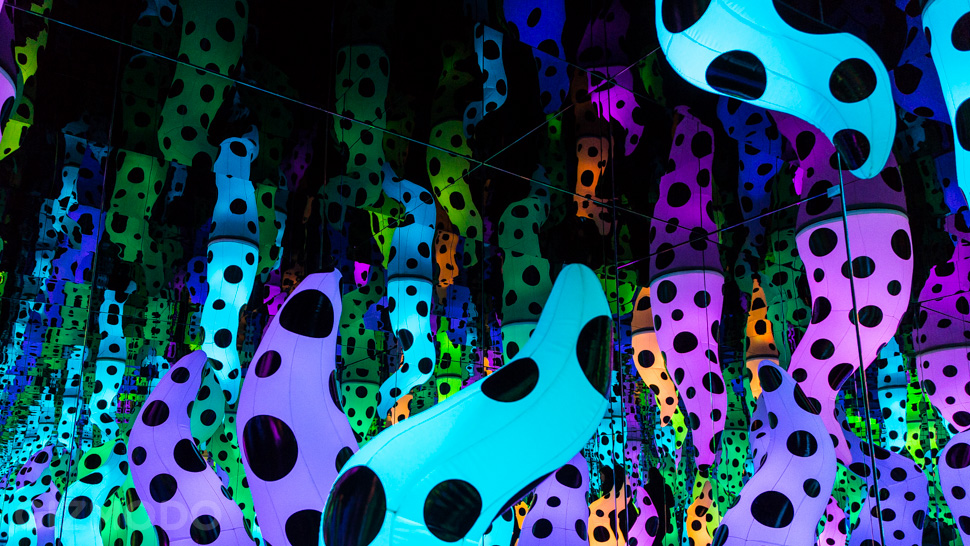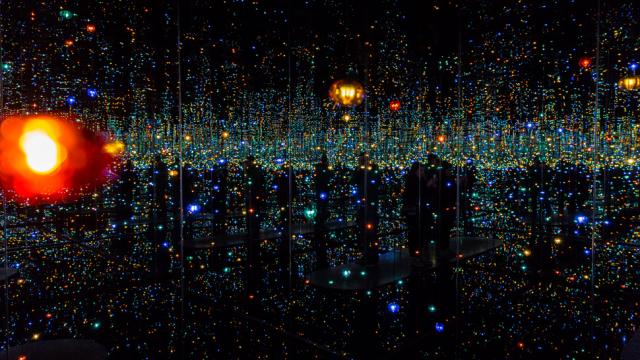Judging by the long lines that have snaked around Chelsea’s David Zwirner gallery this week, it seems that New York has found its next big blockbuster art installation: I Who Have Arrived in Heaven, a spectacular and intense show by 84-year-old Japanese artist Yayoi Kusama — we got a chance to film inside.
There are three major parts to the show: 27 awesomely poppy dot paintings, a video performance by Kusama herself, and two “infinity rooms,” which are the big draw for most visitors — some of whom have waited for hours to spend roughly 45 seconds in each room.
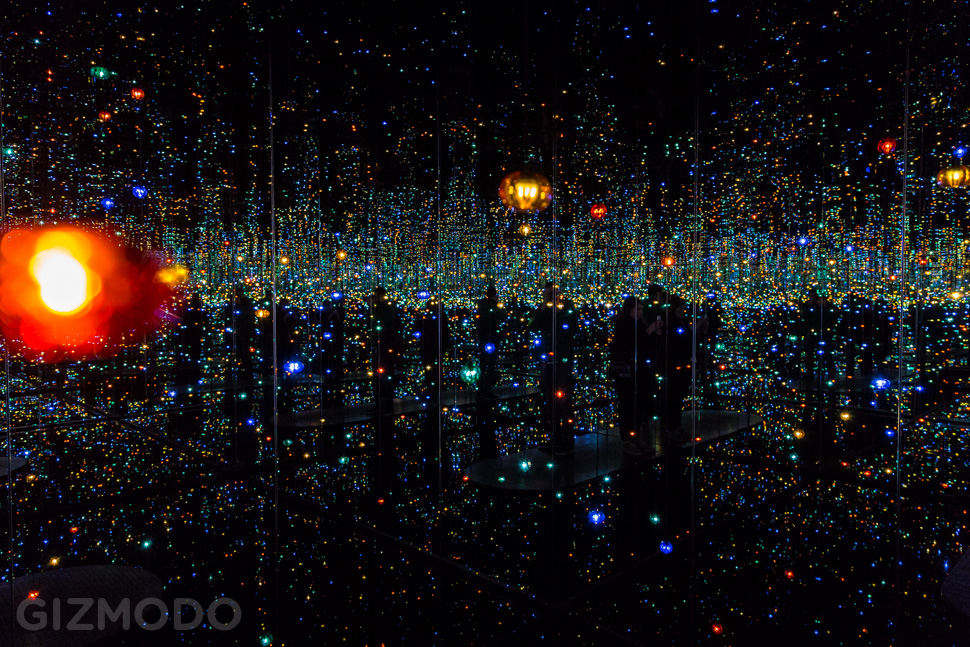
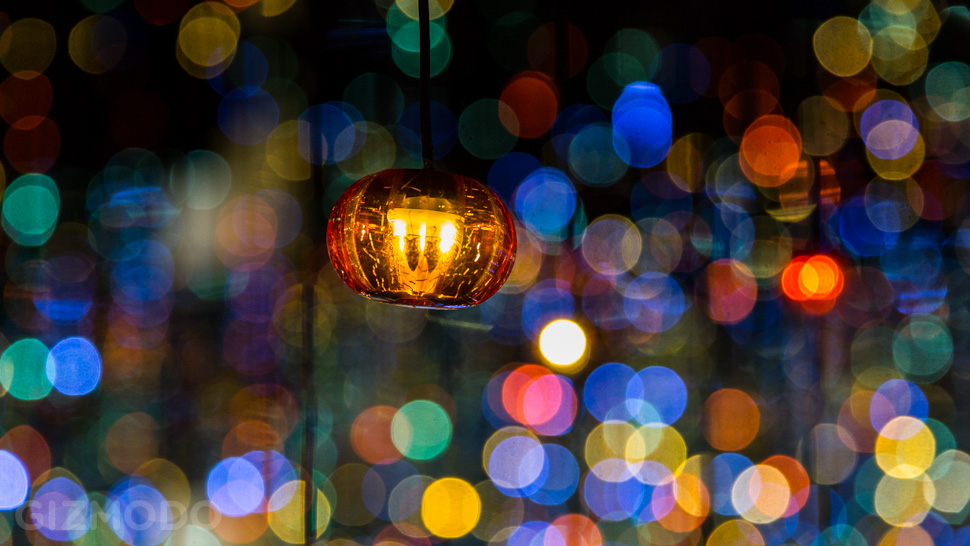
The first room is called Infinity Mirrored Room — The Souls of Millions of Light Years Away. Because the room is covered in giant pieces of mirror, it’s hard to get a read on the size of the space, but it’s roughly the size of a small bedroom. The floor is covered in a shallow pool of water — except for the peninsula you’re standing on in the middle — and the ceiling is hung with strings of hundreds of colourful LED crystals.

Blinking on an erratic 45-second loop, the lights seem to stretch out forever — it’s as though you’re in the back of a cab in a far-off mega-city, an out-take from a William Gibson novel. The second infinity room, likewise, is covered in mirrors and filled with colour-shifting, inflatable tentacles. They are perplexing, magical, and disorienting spaces. And certainly, they have all the hallmarks of the “viral” art installations that have taken New York by storm over the past few years: Interactivity, intense sensorial experiences, and of course — a high selfie factor.
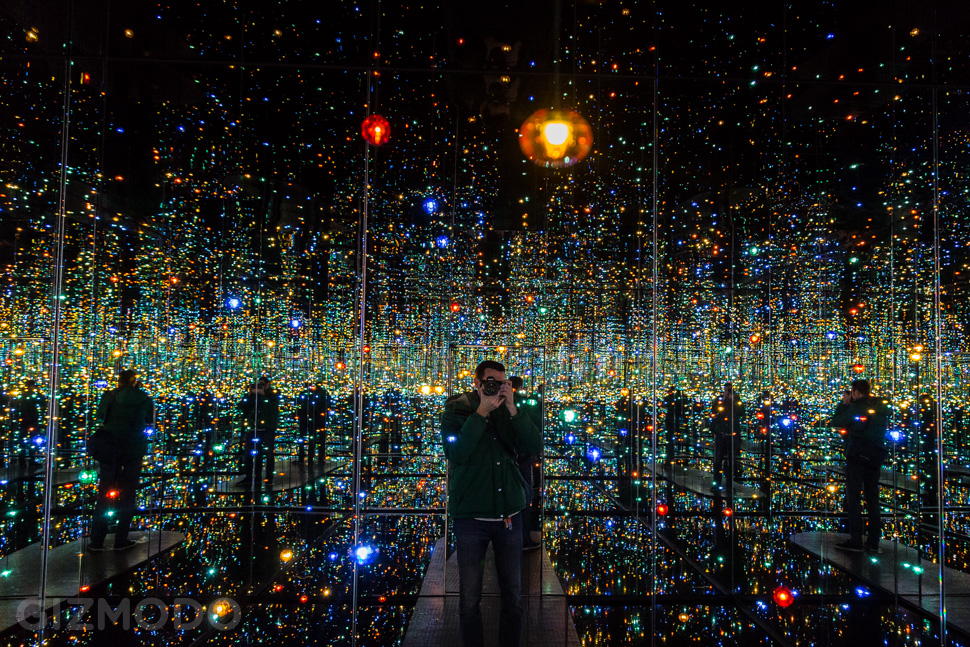
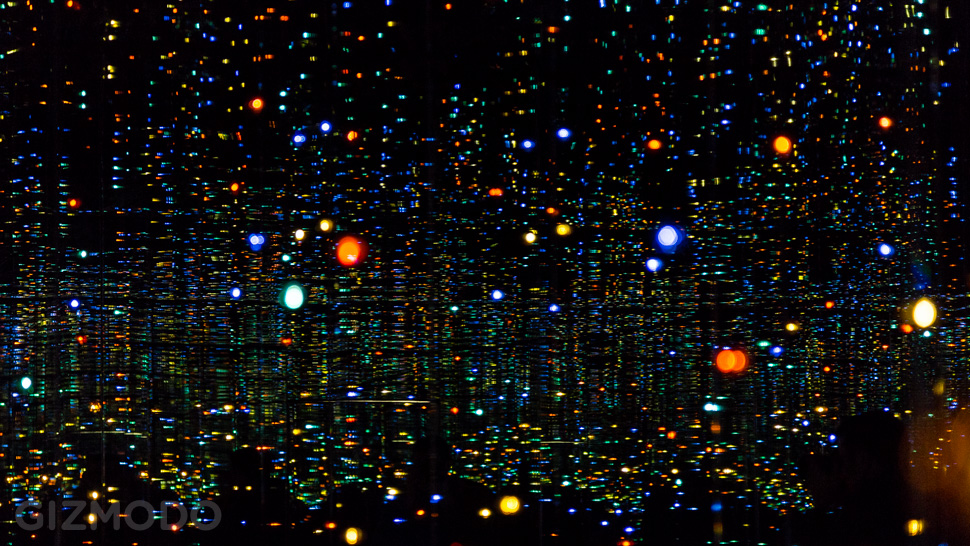
But the infinity room is more than just a magical place to use Instagram — it’s a piece that touches on mental illness, suicide, and the role of art at the most basic level. Kusama emerged on the art scene as a 29-year-old Japanese emigre in 1960s New York (she’s rumoured to have taken Donald Judd as a lover), whose paintings and performance art borrowed directly from the hallucinations she has experienced by since her childhood. But after her meteoric rise, she returned home to Japan in the 1970s, citing psychological stress and a battle with depersonalization syndrome.
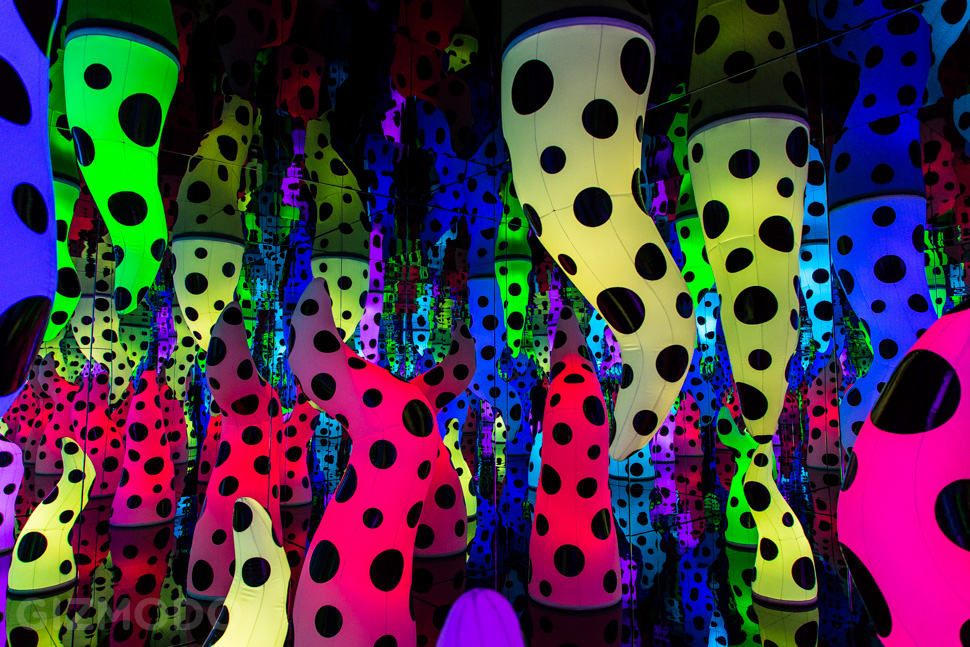
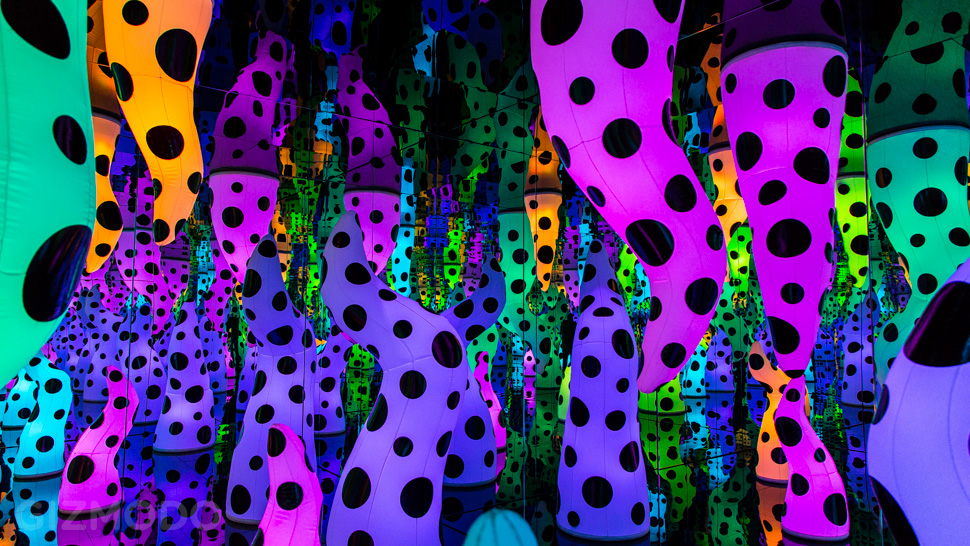
Kusama checked herself into a mental institution in Shinjuku, where she has lived and worked for almost 40 years since. Largely ignored by major museums for decades, it was only last year’s Whitney retrospective that rekindled international interest in her work. And the interest has been intense — not only from curators and collectors but from the fashion world, with Louis Vuitton inviting Kusama to transform its flagship facade last summer.
Kusama’s art is linked to her illness, making it a strange mixture of anguish and joy: From her paintings, which are inspired by hallucinations and visions, to her infinity rooms, which she describes as a tool to tear down the self. “By obliterating one’s individual self, one returns to the infinite universe,” she wrote during a rare fax interview with Grady Turner in 1999. She has said that without art, she would’ve committed suicide.
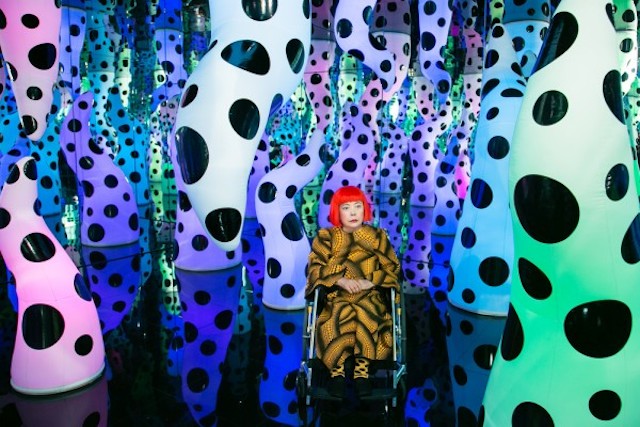

This month’s show includes a poem Kusama wrote about fearing death — an experience that the remarkably badass and irreverent artist like Kusama finds foreign: “It was not supposed to be my style to be frightened of that, but I am.” But at the opening, which she made the voluntary trek to from Tokyo, she was more optimistic: “I’m here today from that institution and the doctor made me carry the pills to help me as well,” she told The Daily Beast’s Ann Binlot. “I think I will be able to, in the end, rise above the clouds and climb the stairs to heaven, and I will look down on my beautiful life.”
I Who Have Arrived in Heaven is on view at David Zwirner‘s West 19th Street gallery through December 21.
